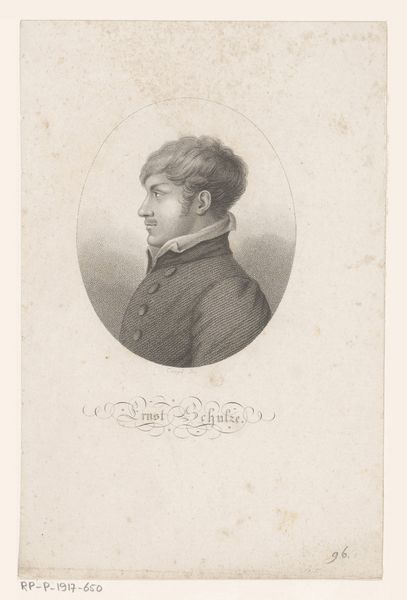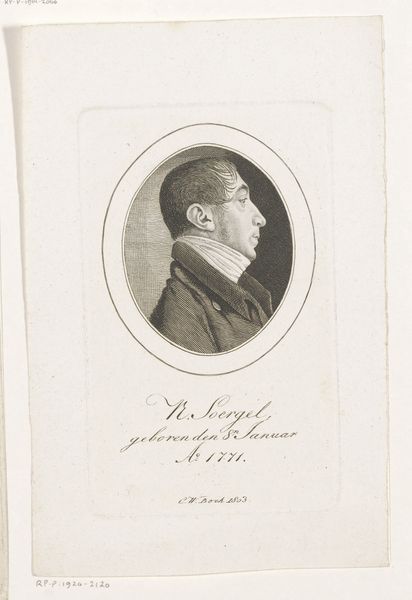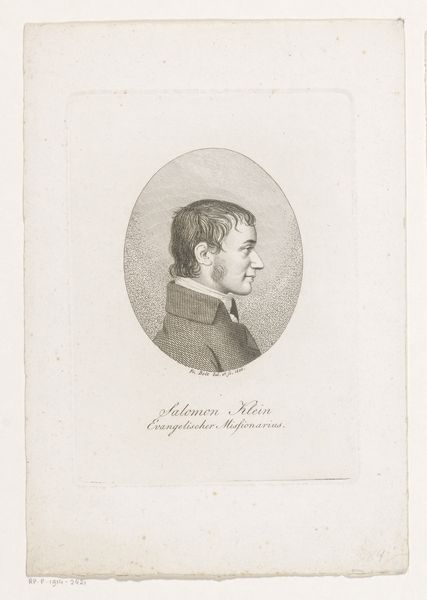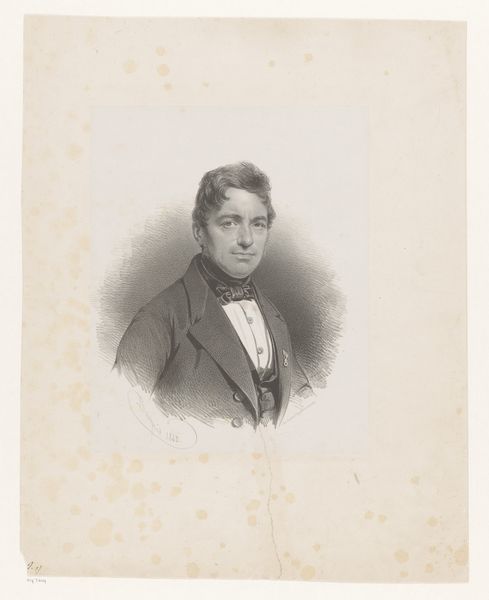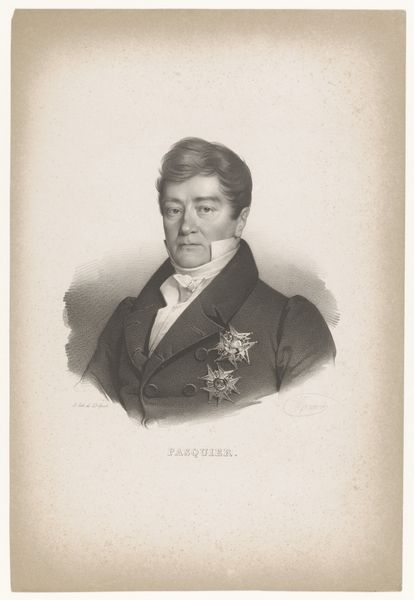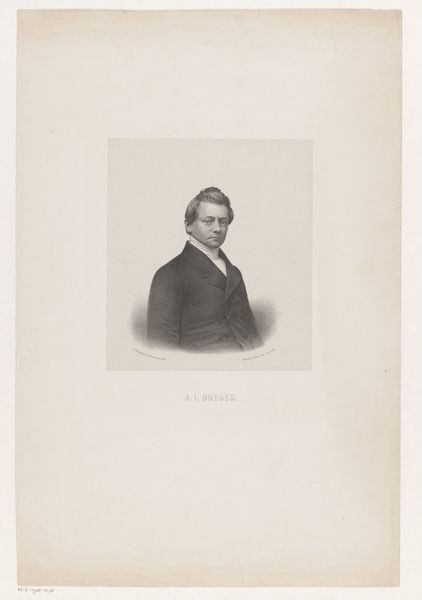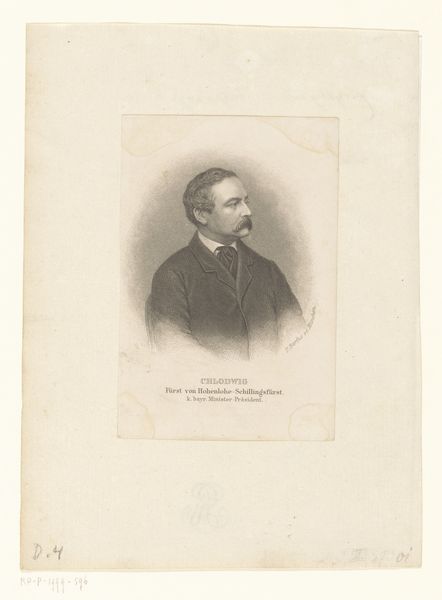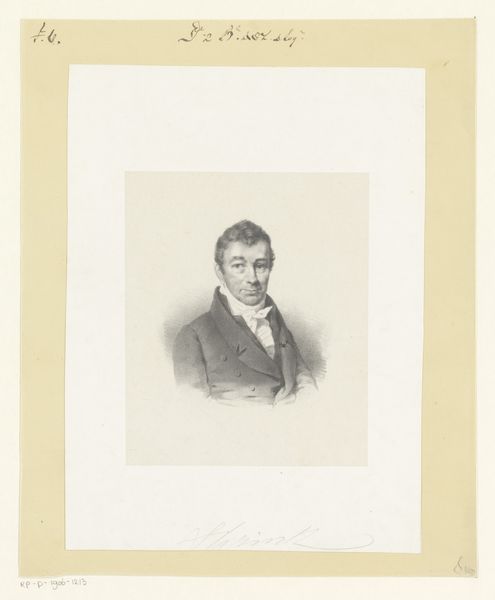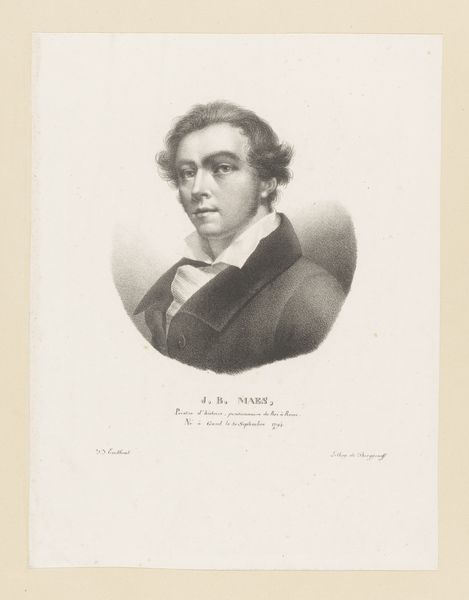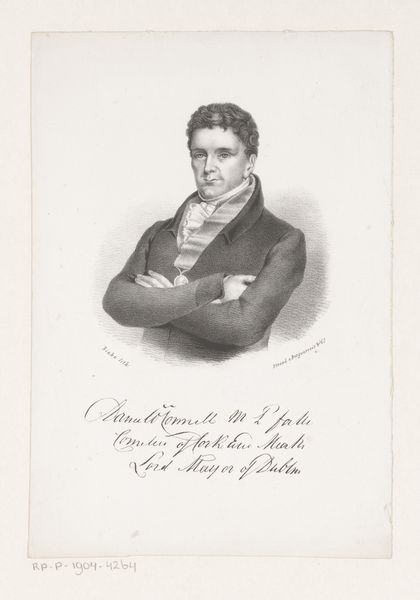
Portret van Ernst Schulze, en profil in een ovale lijst versierd met rozen 1794 - 1846
0:00
0:00
drawing, print, graphite, engraving
#
portrait
#
pencil drawn
#
drawing
# print
#
pencil sketch
#
caricature
#
pencil drawing
#
romanticism
#
graphite
#
portrait drawing
#
engraving
Dimensions: height 169 mm, width 115 mm
Copyright: Rijks Museum: Open Domain
Curator: Antoine Jean Baptiste Coupé created this piece sometime between 1794 and 1846. The work, currently housed in the Rijksmuseum, is a portrait of Ernst Schulze, presented in profile within an oval frame adorned with roses. It appears to be a graphite drawing or possibly an engraving. What strikes you about it at first glance? Editor: He seems so serious, doesn't he? A very stern, almost severe profile captured within that rather ornate, flowery frame. It's quite a contrast—like a thorny rose. Curator: Precisely! The formality of the portrait clashes beautifully with the delicate Romantic style in its ornamentation. It makes me think about the constraints and performativity of portraits—an exercise in control but also fantasy. Editor: Definitely. If we think of it in terms of visual syntax, the oval frame acts almost as a lens, focusing our attention. The roses introduce a semiotic layer that speaks to themes like beauty and perhaps, transience, creating a dialogue with the man's sober appearance. Curator: I can almost hear the scratching of the engraver's tool—such exquisite control over tonal variations! The almost symmetrical design around his name at the bottom further traps Ernst in a cage of social representation. Does the name have its own frame, too? Almost feels cruel! Editor: Absolutely. The frame-within-a-frame reinforces that sense of confinement and constructed identity. And while we're speaking of craft, note how the artist used delicate, closely-spaced lines to build the midtones in his face—an understated realism. Curator: Perhaps Coupé aimed to explore how we construct these lasting impressions of ourselves or others. Ernst Schulze peers out from beyond the roses and filigree—we know what we want you to see. A perfect mirror to project upon, eternally suspended in ink. Editor: It leaves one wondering, doesn't it? A meticulously rendered echo from the past caught within a dance of lines and carefully considered forms, forever speaking softly across centuries. Curator: Beautifully put. Each line invites us to engage not just with the artwork, but with its story—and perhaps our own relationship to those kinds of artistic records, even in today's very different, digital age.
Comments
No comments
Be the first to comment and join the conversation on the ultimate creative platform.
